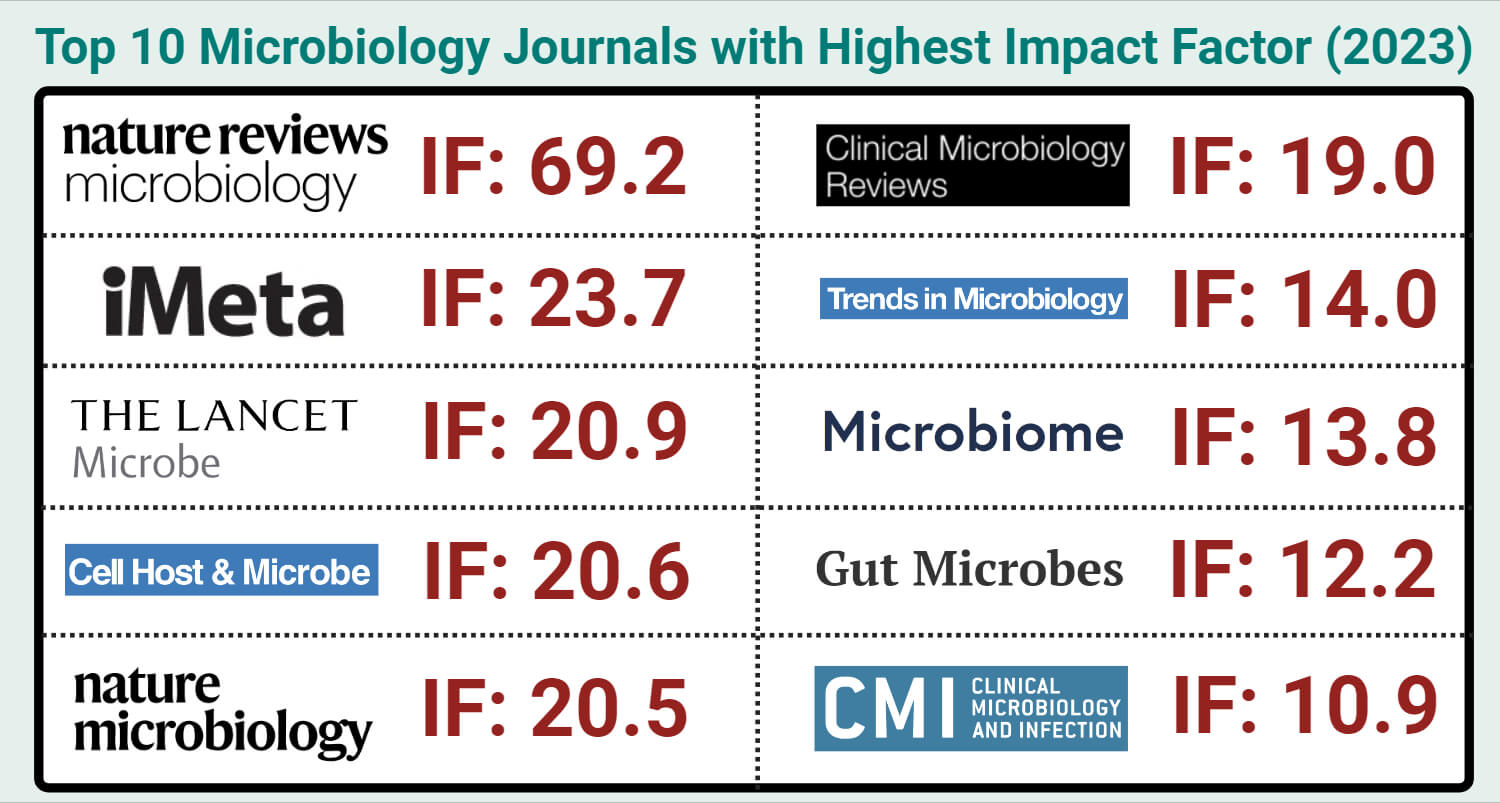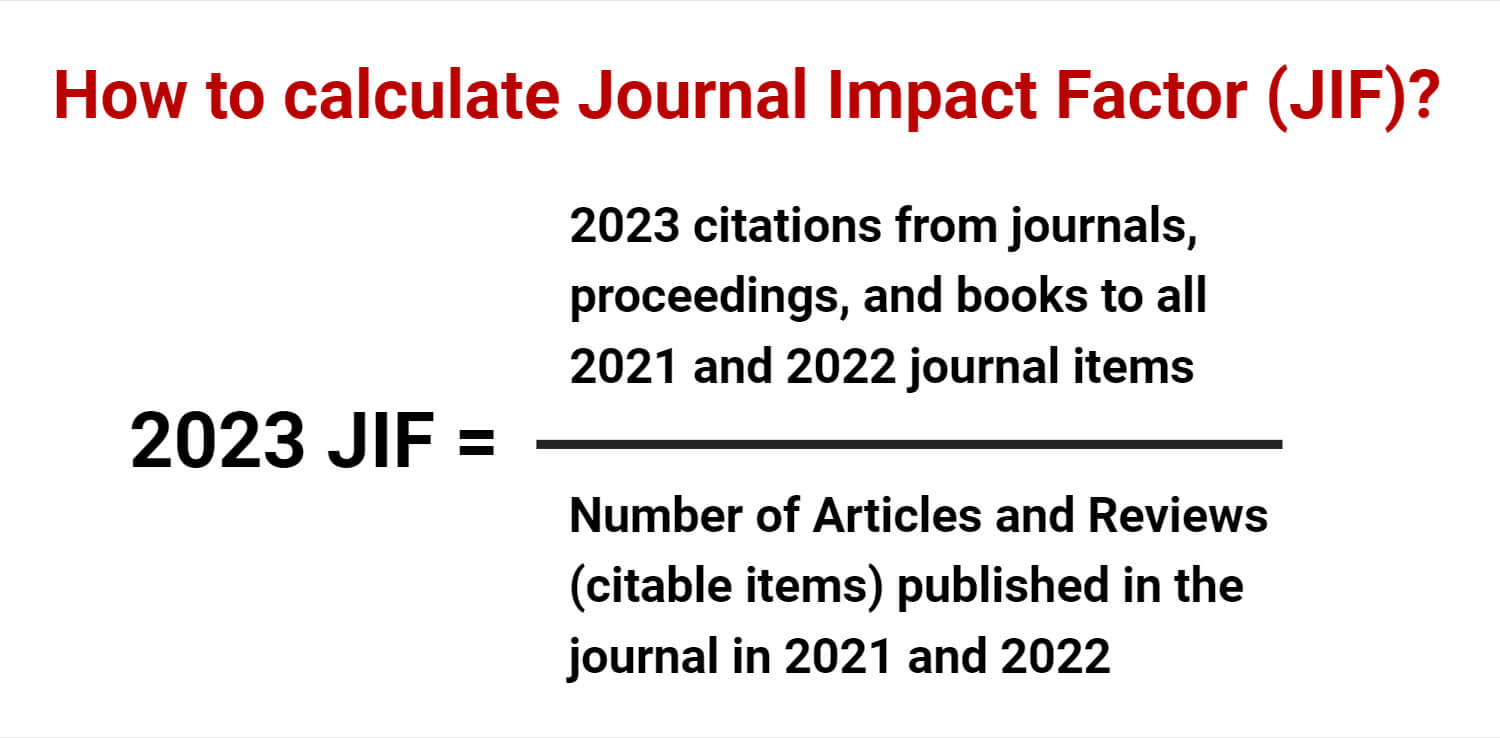Here is the list of the top 10 microbiology journals with the highest impact factor for 2023 as of Journal Citation Reports 2024 (Clarivate).
- Nature Reviews Microbiology (Impact Factor: 69.2)
- iMeta (Impact Factor: 23.7)
- The Lancet Microbe (Impact Factor: 20.9)
- Cell Host and Microbe (Impact Factor: 20.6)
- Nature Microbiology (Impact Factor: 20.5)
- Clinical Microbiology Reviews (Impact Factor: 19.0)
- Trends in Microbiology (Impact Factor: 14.0)
- Microbiome (Impact Factor: 13.8)
- Gut Microbes (Impact Factor: 12.2)
- Clinical Microbiology and Infection (Impact Factor: 10.9)

Interesting Science Videos
1. Nature Reviews Microbiology
The latest impact factor of Nature Reviews Microbiology for 2023 is 69.2.
Nature Reviews Microbiology aims to be the premier source of reviews and commentaries for the scientific communities we serve. Nature Reviews Microbiology strive to publish articles that are authoritative, accessible and enhanced with clearly understandable figures, tables and other display items. Nature Reviews Microbiology want to provide an unparalleled service to authors, referees and readers, and we work hard to maximize the usefulness and impact of each article. Nature Reviews Microbiology publishes Reviews, Perspectives and Comments from across the field of microbiology, with our broad scope ensuring that the work we publish reaches the widest possible audience.
Journal Website: https://www.nature.com/nrmicro/
2. iMeta
The latest impact factor of iMeta for 2023 is 23.7.
iMeta publishes open access research that unites metagenomics and bioinformatics research. The journal scope includes microbiome in humans, animals, plants, and environment, meta-omics methods/protocols development and application, bioinformatics tools, pipelines, databases, and packages, and systematic reviews in metagenomics, bioinformatics, and microbiome.
Journal Website: https://onlinelibrary.wiley.com/journal/2770596x
3. The Lancet Microbe
The latest impact factor of The Lancet Microbe for 2023 is 20.9.
The Lancet Microbe publishes clinically relevant content on microbes at all scales—from the nature of the microbe (eg, antimicrobial resistance genes/plasmids, virulence factors) to the microbiome, to pathology (including immunology) to population level effects (eg, outbreaks, epidemiology). The Lancet Microbe also publish early phase clinical trials and other interventional studies where the outcomes are focused on the pathogen. The journal also continues in the The Lancet’s tradition of being a strong advocate for and collaborator with the community they serve. The Lancet Microbe publish a range of content types including Articles, Comment, Correspondence, Newsdesk, and Personal View.
Journal Website: https://www.thelancet.com/journals/lanmic/home
4. Cell Host & Microbe
The latest impact factor of Cell Host and Microbe for 2023 is 20.6.
Cell Host & Microbe was launched in March 2007. The journal’s mission is to provide a forum for the exchange of ideas and concepts between scientists studying the microbe with those studying the host immune, cell biological, and molecular response upon colonization or infection by a microbe. Cell Host & Microbe will publish novel findings related to microbes (which includes bacteria, fungi, parasites, and viruses) from molecular and cellular biology to translational studies with particular emphasis on the interface between the microbe and its host (vertebrate, invertebrate, or plant; unicellular or multicellular). The unifying theme is the integrated study of microbes (pathogenic, non-pathogenic, and commensal) in conjunction and communication with each other, their host, and the cellular environment they inhabit. Work published in Cell Host & Microbe is expected not only to be of exceptional significance within its field, but also of interest to researchers outside the immediate area. In addition to primary research manuscripts, Cell Host & Microbe will publish expert analysis, commentary, and reviews on topics of current interest in the field.
Journal Website: https://www.cell.com/cell-host-microbe/home
5. Nature Microbiology
The latest impact factor of Nature Microbiology for 2023 is 20.5.
Nature Microbiology is an online-only, monthly journal publishing the best research from across the field of microbiology. All editorial decisions are made by a team of full-time professional editors. Nature Microbiology is interested in all aspects of microorganisms, be it their evolution, physiology and cell biology; their interactions with each other, with a host or with an environment; or their societal significance. Nature Microbiology provides a place where all researchers and policymakers interested in microorganisms can come together to learn about the most accomplished and significant advances in the field and to discuss topical issues. An online-only monthly journal, our broad scope ensures that the research published reaches the widest possible audience of microbiologists.
Journal Website: https://www.nature.com/nmicrobiol/
6. Clinical Microbiology Reviews
The latest impact factor of Clinical Microbiology Reviews for 2023 is 19.0.
Clinical Microbiology Reviews analyzes the latest developments in clinical microbiology and immunology. Key topics include pathogenic mechanisms, individual and groups of microbial pathogens, clinical and laboratory aspects of newly recognized and reemerging infectious diseases, antimicrobial agents and their applications, and diagnostic laboratory technologies. Clinical Microbiology Reviews (CMR) accepts authoritative narrative reviews that are of primary interest to clinical microbiologists, medical microbiologists and immunologists, public health workers, infectious disease clinicians, and others interested in the pathogenesis, laboratory diagnosis, epidemiology, and control of human and veterinary pathogens.
Journal Website: https://journals.asm.org/journal/cmr
7. Trends in Microbiology
The latest impact factor of Trends in Microbiology for 2023 is 14.0.
Trends in Microbiology provides a multidisciplinary forum for the discussion of all aspects of microbiology: from cell biology and immunology to genetics and evolution, and ranges across virology, bacteriology, protozoology and mycology. The table of contents includes a lively mix of commentary, correspondence and review. Most articles are commissioned and all of them are peer-reviewed. Consequently, they make an authoritative basis for teaching and keeping abreast of developments across the field. The focus is on molecular microbiology and virology, and includes topics such as genomics, the gamut of plant and animal host-pathogen interactions, host immune responses, characterization and evolution of virulence determinants, cell cycle and differentiation, symbiosis in plant and animal associations, environmental microbiology, biodiversity and evolution, population dynamics, sex and mutagenesis, antibiotic resistance and production, drug and vaccine targets, as well as aspects of prion diseases and of fungal and protozoan biology.
Journal Website: https://www.cell.com/trends/microbiology/home
8. Microbiome
The latest impact factor of Microbiome for 2023 is 13.8.
Microbiome encompasses studies of microbiomes colonizing humans, animals, plants or the environment, both built and natural or manipulated, as in agriculture. Studies on the development and application of meta-omics approaches or novel bioinformatics tools, on community/host interaction with emphasis on structure-function relationship that would lead to substantial advances in the field will be considered for publication. Microbiome is especially interested in studies that go beyond descriptive omics surveys and include experimental or theoretical approaches that mechanistically support proposed microbiome functions, and establish, if possible, cause and effect relationships. Studies of individual microbial isolates/species in vivo or in laboratory cultures without exploring the mechanisms by which they affect the complex microbiome structures and functions will not be considered. Through this collection of literature, Microbiome hopes to integrate researchers with common scientific objectives across a broad cross-section of sub-disciplines within microbial ecology.
Journal Website: https://microbiomejournal.biomedcentral.com/
9. Gut Microbes
The latest impact factor of Gut Microbes for 2023 is 12.2.
Gut Microbes provides a platform for presenting and discussing cutting-edge research on all aspects of microorganisms populating the intestine. The journal focuses in particular on mechanistic and cause and effect studies. Gut Microbes is the sister journal of Gut Microbes Reports, which has a greater focus on emerging topics and comparative and incremental studies. Gut Microbes brings together a multidisciplinary community of scientists working in the areas of Profiling the intestinal microbiota, Gastrointestinal disease: mechanisms, host defense, diagnosis, epidemiology, Host-pathogen interactions including enteric disease and bacterial pathogenesis, Quorum sensing and toxicity, Probiotics and prebiotics, Novel treatments and clinical trials, Role of intestinal microbiota in health and disease, etc. Gut Microbes accepts Research Papers/Reports, Reviews, Brief Reports, Research Letters, Commentaries and Views, Creative Commentaries, Meeting Reports, Data Notes, Invited Editorials for publication.
Journal Website: https://www.tandfonline.com/journals/kgmi20
10. Clinical Microbiology and Infection
The latest impact factor of Clinical Microbiology and Infection for 2023 is 10.9.
Clinical Microbiology and Infection (CMI) is a monthly publication in English of the European Society of Clinical Microbiology and Infectious Diseases and publishes peer-reviewed papers that present basic and applied research relevant to therapy and diagnostics in the fields of microbiology, infectious diseases, virology, parasitology, immunology, and epidemiology as related to these fields.
Journal Website: https://www.clinicalmicrobiologyandinfection.com/
Disclaimer: Logos and information are only used for educational purposes. If there are any copyright issues regarding the logo and information of the journal, please email us at microbenotes@gmail.com.
How is the Journal Impact Factor (JIF) calculated?
The JIF is defined as citations to the journal in the JCR year to items published in the previous two years, divided by the total number of citable items, (i.e., Articles and Reviews) published in the journal in the previous two years. The JCR year is the last complete year within that year’s JCR data set. For example, the JCR year for the 2024 release is 2023.

References
- Journal Citation Reports 2024: https://jcr.clarivate.com/jcr/home
- Nature Reviews Microbiology
- iMeta
- The Lancet Microbe
- Cell Host and Microbe
- Nature Microbiology
- Clinical Microbiology Reviews
- Trends in Microbiology
- Microbiome
- Gut Microbes
- Clinical Microbiology and Infection

Great article! Will check out these psychology journals!